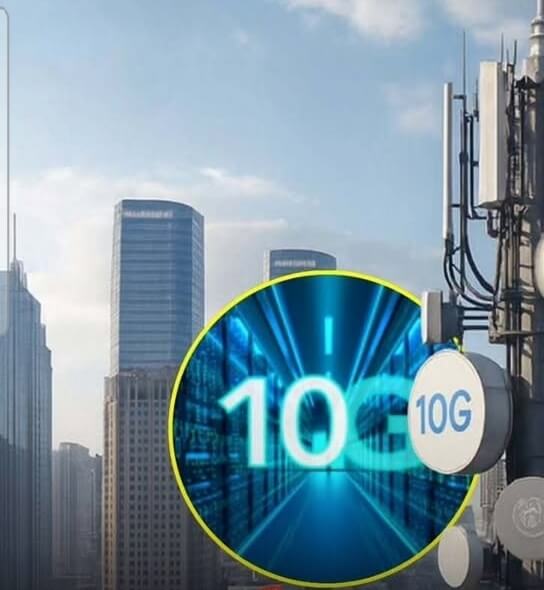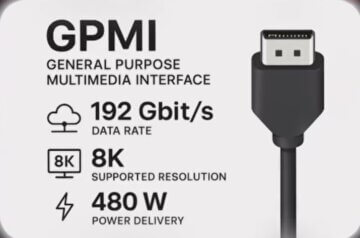With the introduction of the first 10G internet network in history, China has once again grabbed headlines in the technology world. This historic accomplishment ushers in a new digital era when 8K streaming, smart homes, and next-generation cloud apps will all be powered by lightning-fast internet.
This essay will examine the innovation’s speed, technology, and practical implications, as well as how it places China at the vanguard of the internet revolution.

What Makes the 10G Broadband Network Revolutionary?
The new 10G network is nothing short of revolutionary. Traditional home broadband connections typically range between 100 Mbps to 1 Gbps, but China’s latest breakthrough takes speeds to an entirely new level.
- Download Speed: Up to 9,834 Mbps, capable of downloading a 20GB file in under 20 seconds.
- Upload Speed: Around 1,008 Mbps, ensuring seamless sharing, live streaming, and video conferencing.
For perspective, downloading a 4K movie that usually takes several minutes can now be done in just a few seconds. This isn’t just about faster entertainment—it’s about unlocking new possibilities across industries.
Technology Behind the 10G Network – 50G PON
At the heart of this breakthrough lies 50G Passive Optical Network (PON) technology. Unlike traditional broadband upgrades that require massive infrastructure changes, 50G PON enhances the existing fiber-optic network.
Key advantages of 50G PON technology:
- Massive Bandwidth: Provides up to 50 Gbps data capacity per wavelength.
- Cost-Effective Upgrade: Works with existing optical fiber cables, reducing deployment costs.
- Low Latency: Critical for applications like virtual reality (VR), augmented reality (AR), and autonomous systems.
- Future-Proofing: Scalable for even higher speeds in the coming years.
This technological foundation not only boosts internet speeds but also strengthens the backbone for next-generation smart cities and advanced digital ecosystems.
Real-World Applications of 10G Broadband
The launch of this high-speed network isn’t just about breaking records—it’s about transforming everyday digital life. Here’s how China’s 10G broadband will reshape industries and experiences:
1. Ultra-HD and 8K Streaming
With speeds approaching 10 Gbps, streaming 8K resolution videos will be effortless, eliminating buffering and lag. Content creators, broadcasters, and streaming platforms can deliver richer and more immersive experiences.
2. Virtual Reality (VR) and Augmented Reality (AR)
Immersive technologies like VR gaming, AR shopping, and virtual tourism will reach new heights. High-speed connectivity ensures low latency, making interactions smoother and more realistic.
3. Cloud-Based Applications
Businesses increasingly rely on cloud platforms for collaboration and data storage. The 10G broadband network will allow near-instant data access, faster uploads, and efficient real-time collaboration, making remote work more productive.
4. Smart Homes and IoT Devices
From smart speakers and AI-powered assistants to security systems and energy management tools, smart homes depend on stable, high-speed internet. The 10G network enables seamless operation of hundreds of devices simultaneously without slowing down performance.
5. Gaming and Esports
Gamers will benefit from ultra-low latency, fast downloads, and smooth online experiences. Esports events can now run with near-real-time precision, enhancing competitiveness and audience experience.
Global Impact – Setting a New Benchmark
China’s world-first 10G broadband network sets a global benchmark for internet technology. Other countries are closely watching, and telecom providers worldwide are expected to accelerate their own high-speed broadband projects.
The ripple effects include:
- Boost to Innovation: Startups and enterprises can develop more advanced applications powered by ultra-fast connectivity.
- Digital Economy Growth: Faster internet drives e-commerce, fintech, and online education.
- Improved Healthcare: Telemedicine and remote surgery become more reliable with stable high-speed connections.
- Smart Cities: IoT-driven infrastructure, intelligent traffic systems, and AI-powered utilities benefit from the speed and stability of 10G.
Challenges Ahead
While the launch is impressive, challenges remain in rolling out 10G broadband nationwide:
- Infrastructure Costs: Even though 50G PON uses existing fiber, large-scale deployment is expensive.
- Device Compatibility: Consumers will need upgraded routers and devices to fully leverage 10G speeds.
- Urban-Rural Divide: Ensuring equal access across cities and rural regions will be crucial for bridging the digital divide.
China, however, has shown strong commitment to expanding high-speed internet infrastructure, suggesting that these challenges may be addressed over time.
Future of Broadband – Beyond 10G
While 10G broadband feels futuristic, it’s just the beginning. Experts predict that in the next decade, we could see networks reaching 20G or even 100G speeds, powered by further advancements in optical technology.
With this launch, China has laid the foundation for a digital future where speed, connectivity, and innovation converge to transform the way we live, work, and connect.
China’s launch of the world’s first 10G broadband network is more than just a milestone—it’s a paradigm shift in global connectivity. Powered by 50G PON technology, this innovation promises speeds up to 9,834 Mbps, enabling groundbreaking applications in 8K streaming, VR/AR, smart homes, cloud computing, and more.
As this technology expands, it will fuel the next wave of digital transformation, redefining how individuals, businesses, and societies interact in the connected world.
What is China’s 10G broadband speed?
It offers up to 9,834 Mbps download speed and upload speed.
What technology powers the 10G network?
The network uses 50G Passive Optical Network (PON) technology for ultra-fast data transmission.
How fast can a 20GB file be downloaded?
less than 20 seconds using the 10G network.
What can 10G broadband be used for?
supports 8K streaming, VR/AR, gaming, cloud applications, smart homes, and IoT



